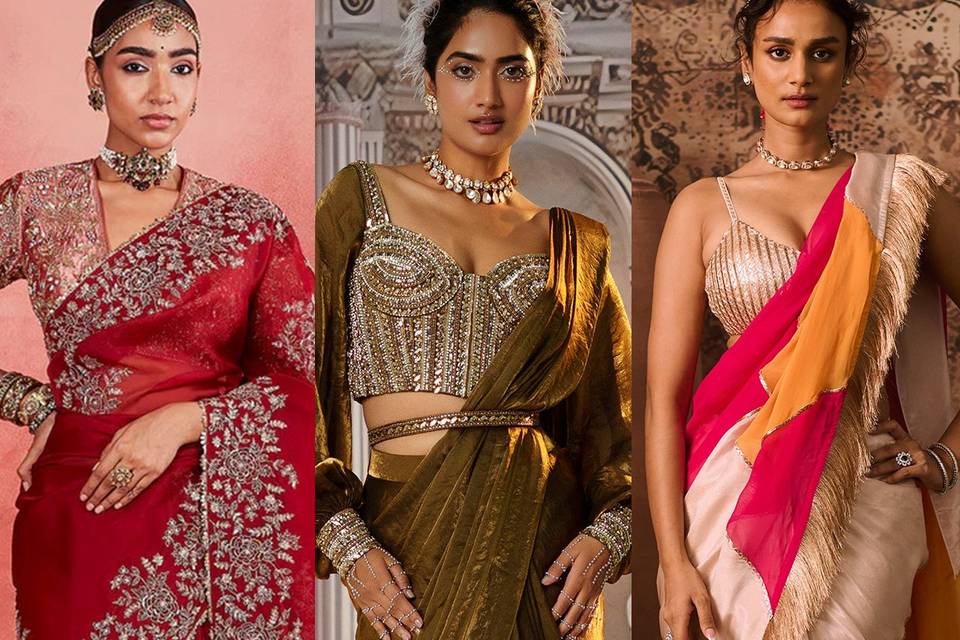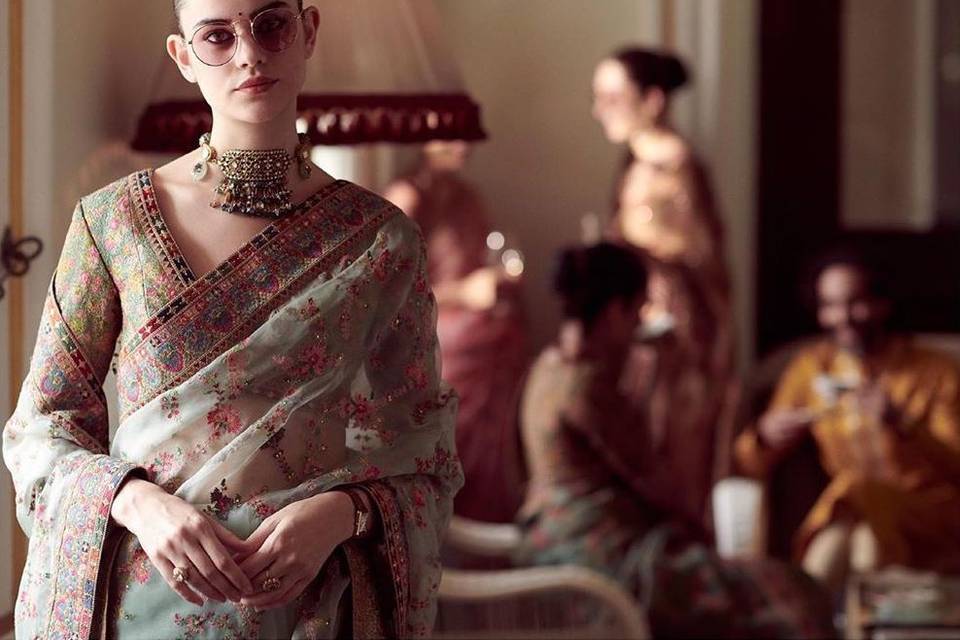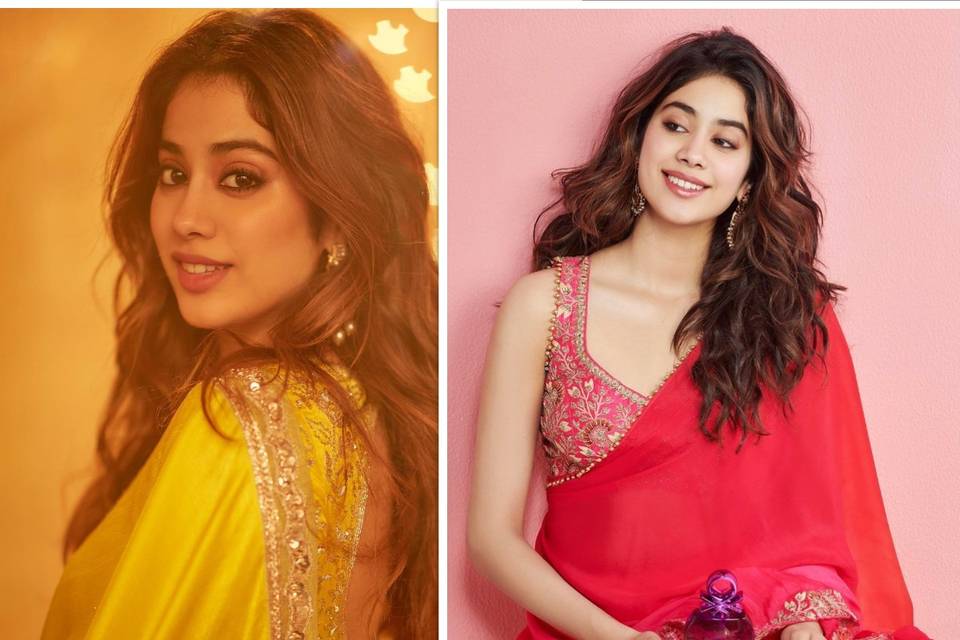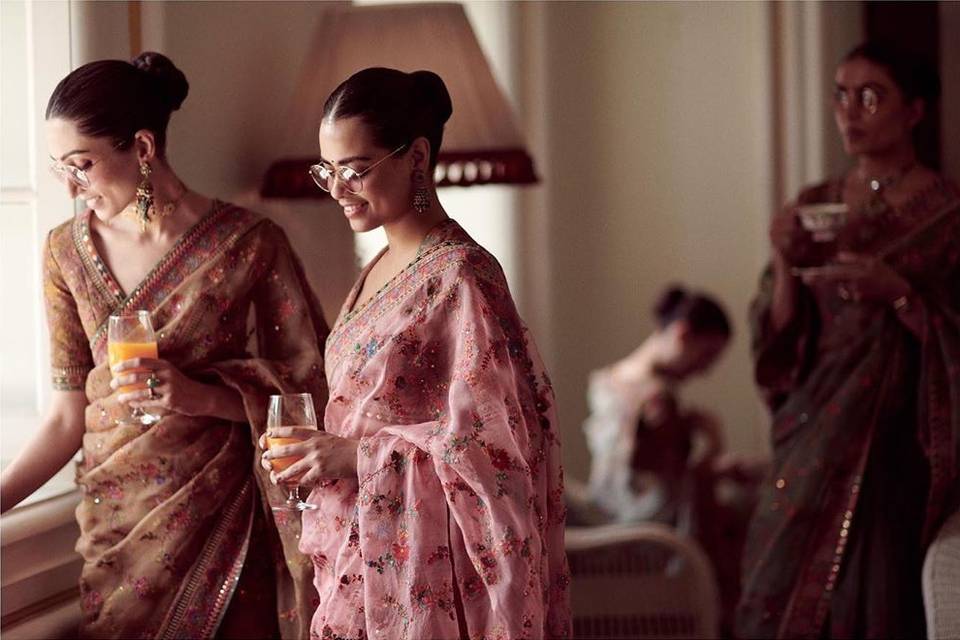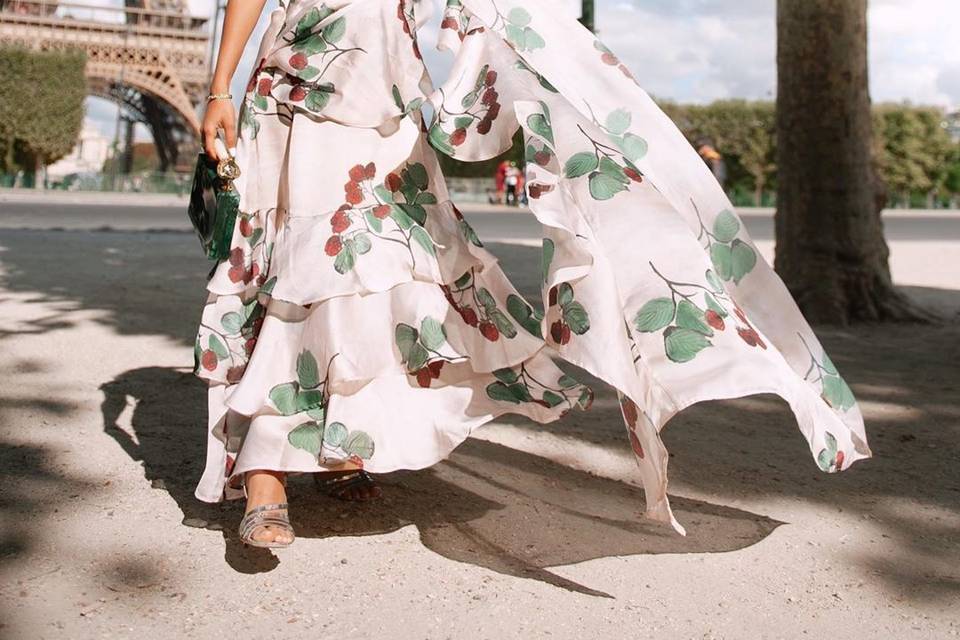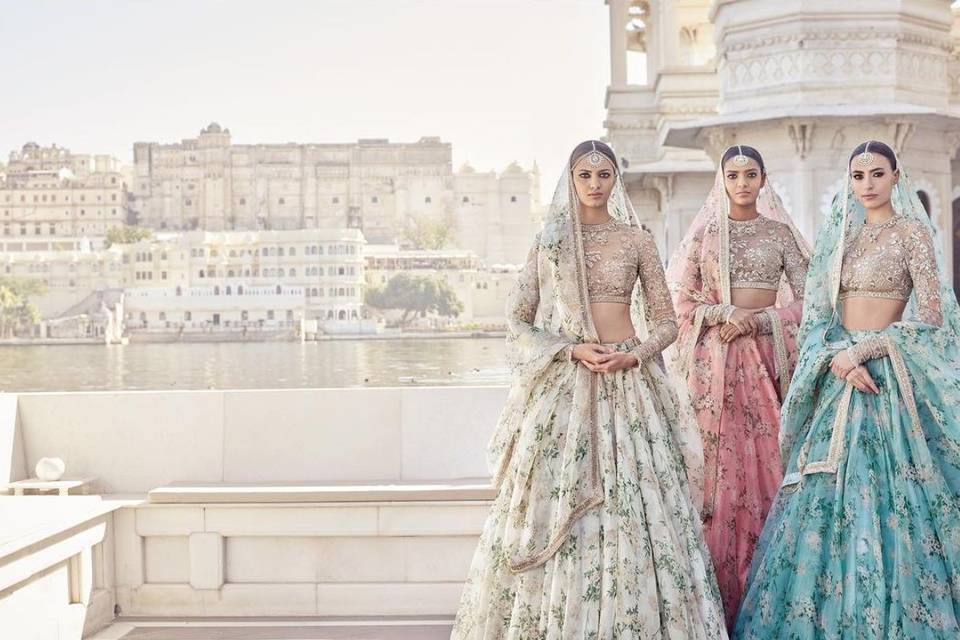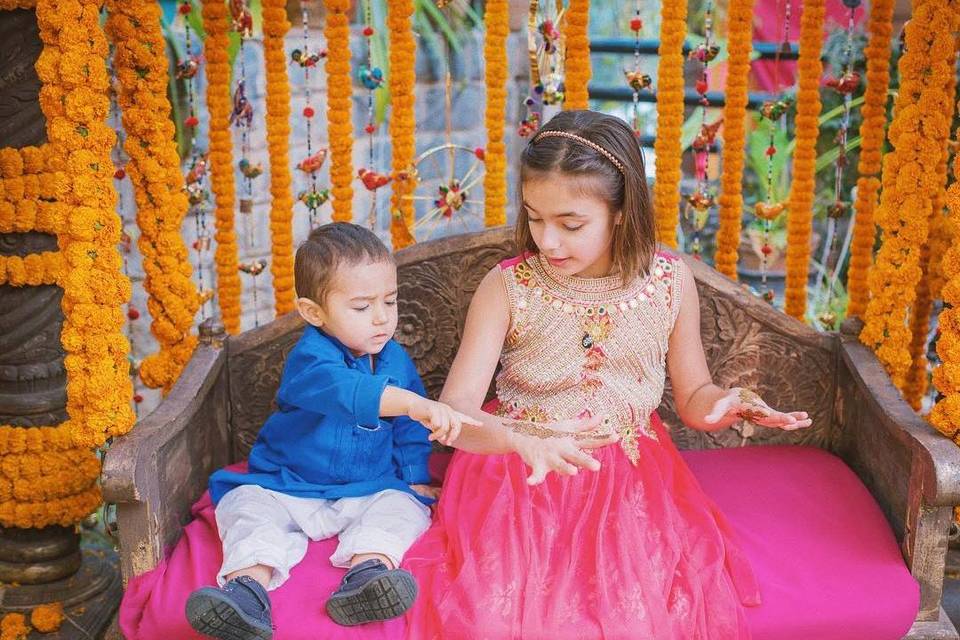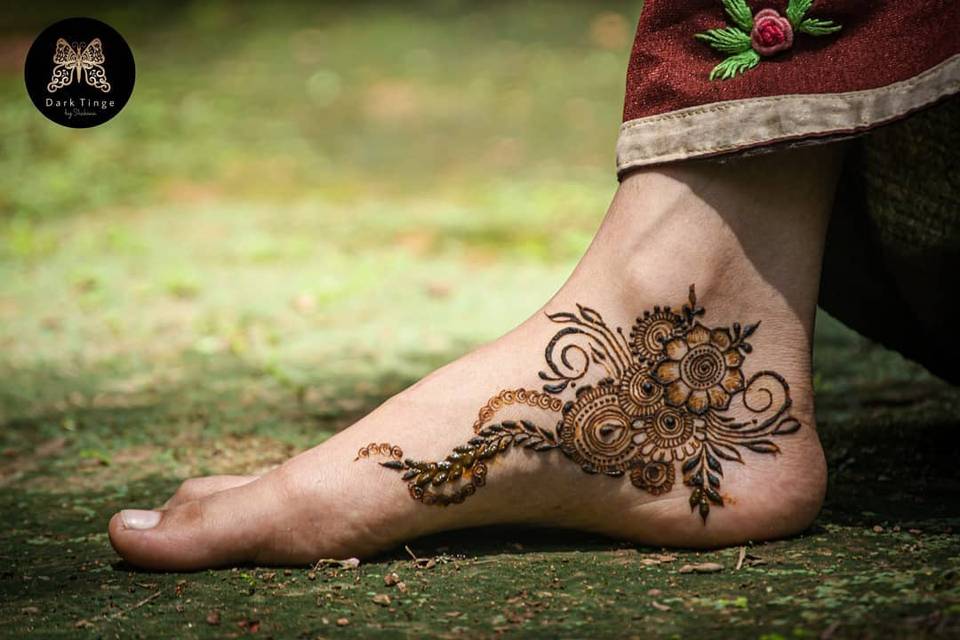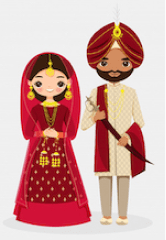The Lehenga Half Saree: What Is This Garment And Who Should Wear It?
Unlike its popular cousin, the Kanjeevaram saree, the lehenga half saree style is one that not everyone knows about. Find out what this garment is, who it’s made for, and how you can wear it!
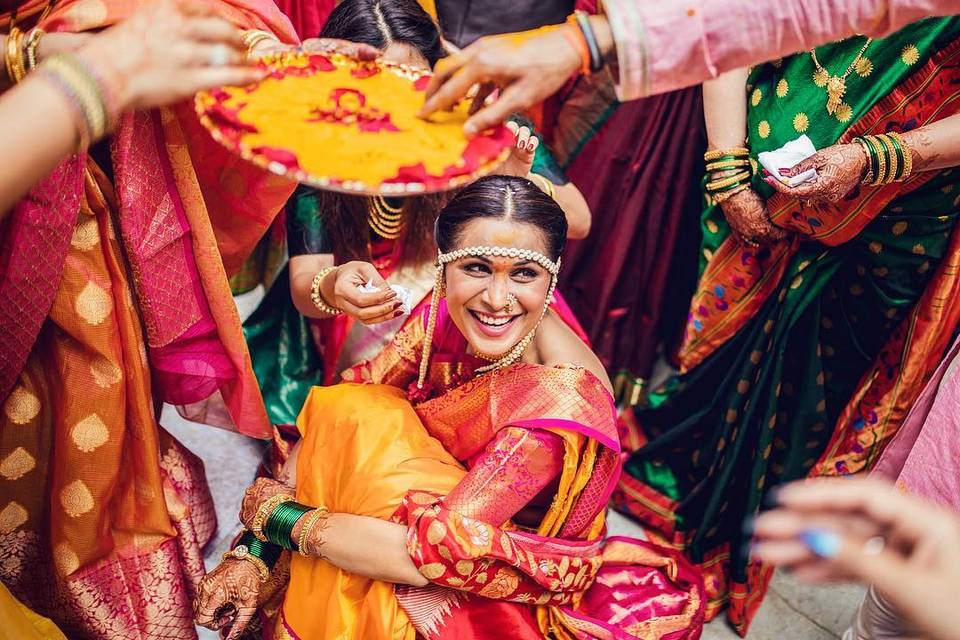
Image Courtesy: Indian Cloth Store
A lehenga half saree, also known as a half saree, Langa Davani, Pattu Pavadai Daavani, or Langu Voni, is a traditional outfit born in South India. Most commonly, this ethnic ensemble is worn by girls who have reached puberty and are ready to get married. In terms of its silhouette, it is quite similar to the lehenga saree outfit that’s recently become quite popular. However, this is a much older garment with entirely different components that come together to make the whole look.
For starters, there is the skirt, which is also commonly known as the Langa. This skirt is similar to the structure of a petticoat in the sense that it has a drawstring that helps you tie it around the waist. The second component is the Voni, which functions like a dupatta. The cloth is generally 2.5 meters in length and is draped in a diagonal fashion across the chest. The third component of the lehenga half saree is the choli or the blouse.
1. The cultural significance of the lehenga half saree
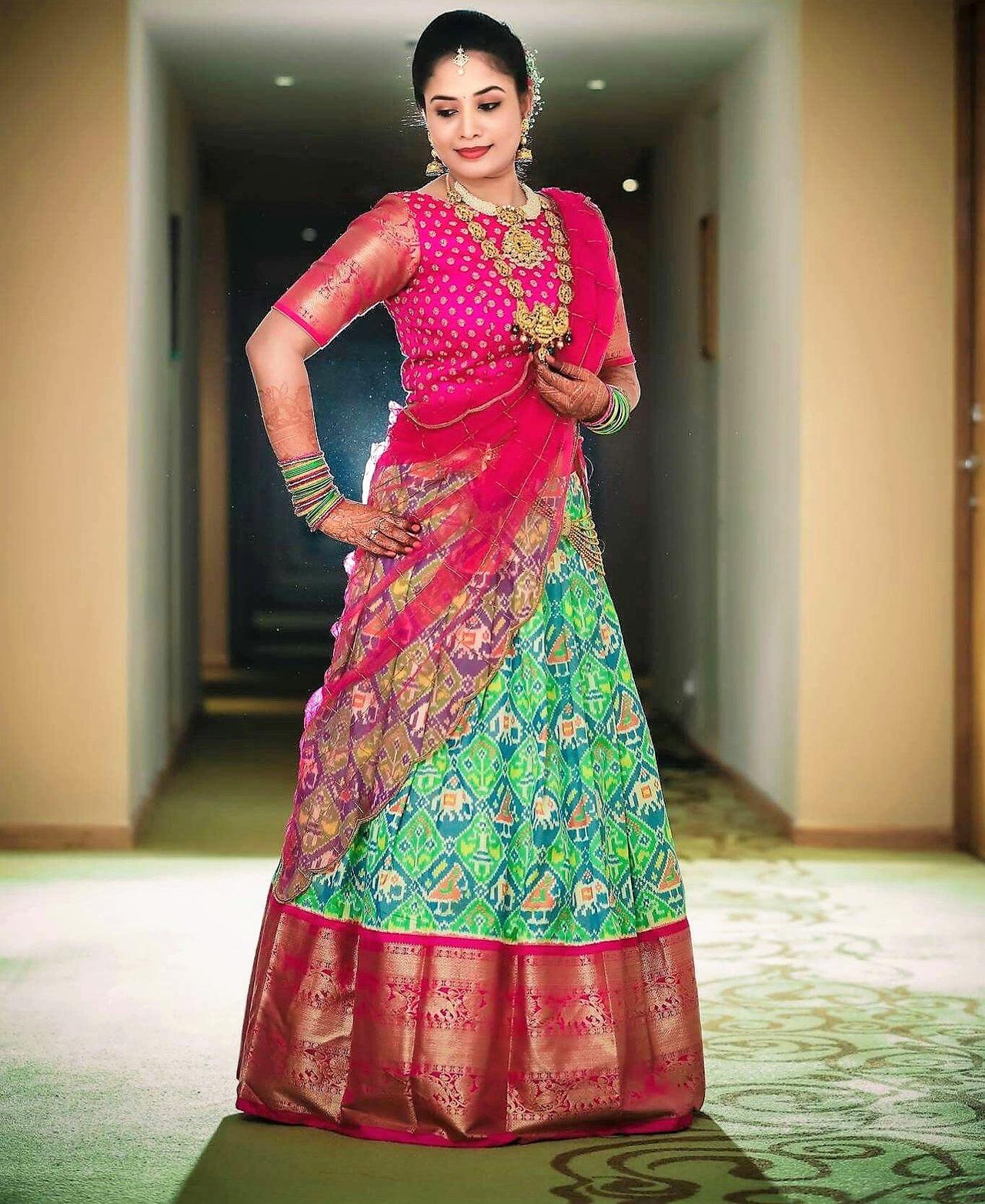
Image Courtesy: Keep Me Stylish
In many states in India, when a woman reaches puberty, the women of the community come together to celebrate her maturity. During such celebrations, the maternal grandparents of the girl gift her a lehenga half saree in order to celebrate the occasion. This garment marks her transition into womanhood, as pre-pubescent girls often wear a much simpler skirt and top.
During the ceremony that celebrates her puberty, the girl must wear her new lehenga half saree during the first half and then changes into a regular saree during the second half. This portion of the ritual symbolises the woman she will be someday.
As this garment has its roots in rituals and cultures, there are certain colours that people avoid wearing as they consider them to be inauspicious. Young women are generally not supposed to wear a black garment as it is considered to be the colour of Saturn, which brings bad luck. Colours like white are also generally avoided, however in certain cultures, a white and red saree is appropriate during prayers or festive events.
2. Wearing and maintaining the lehenga half saree

Image Courtesy: Tollywood Boost
When one wears a traditional saree, one must drape it correctly, ensure the pleats are perfect, and then make adjustments to get the perfect fall. Wearing this garment can often be so complicated that many women do not know how to drape a saree with pleats. Due to this, the saree has become a garment that is busted out during special occasions, for many people. The lehenga half saree, on the other hand, serves as the ideal daily wear garment for women in South Indian states. Since it just consists of the three components, women only have to wear them and walk out the door. There’s no fuss over the way it looks.
Maintaining this garment is quite similar to maintaining a traditional silk saree as a lehenga half saree is also often made with silk. Women generally wrap up their sarees in a soft cloth or a muslin cloth to prevent the fabric from undergoing any damage. Such sarees should not be left out in direct sunlight to dry as this can totally ruin the colours of the garment and even the overall quality of the silk.
3. Wearing this garment at weddings
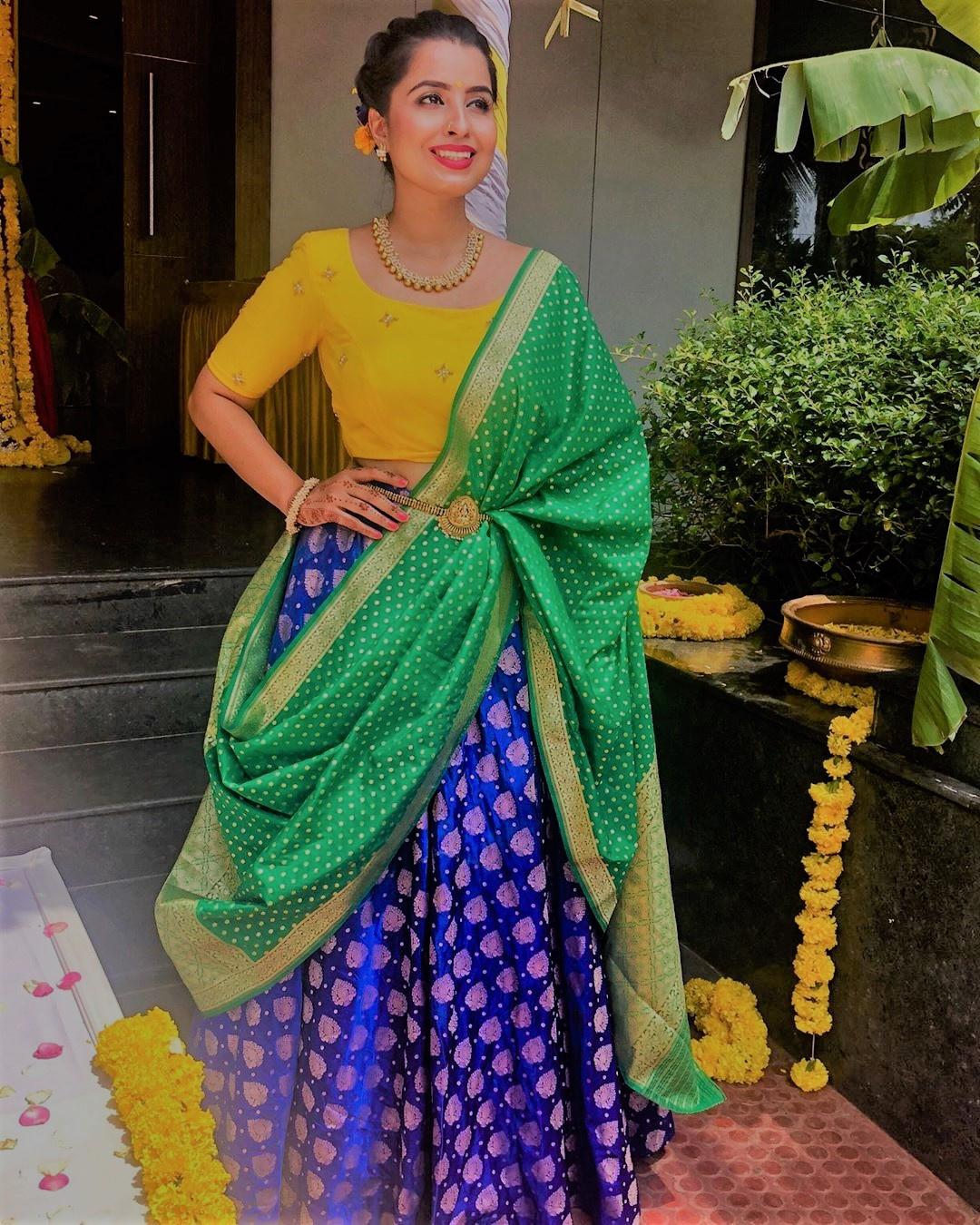
Image Courtesy: Insta Aura by Nehaa
As the lehenga half saree is traditionally meant for young girls, one does not find many older women wearing these while attending weddings. You do, however, see young teens wearing the garment. Like Kanjeevaram silk sarees, this garment is often made with contrasting colours for the dupatta and the choli, so that is the look you’ll see most often when you see this garment.
During wedding ceremonies, teens wearing this garment generally accessorise the look with temple jewellery, especially with Billai running down their plait. This is a classic look sported by Tamil women, who supplement the accessory with Gajra flowers and other embellishments.
More often than not, you’ll find this garment with a lot of zari work, especially at the border, which is what makes it dressy enough for a wedding. Like a traditional silk saree, these outfits are quite stunning and make the wearer look regal.
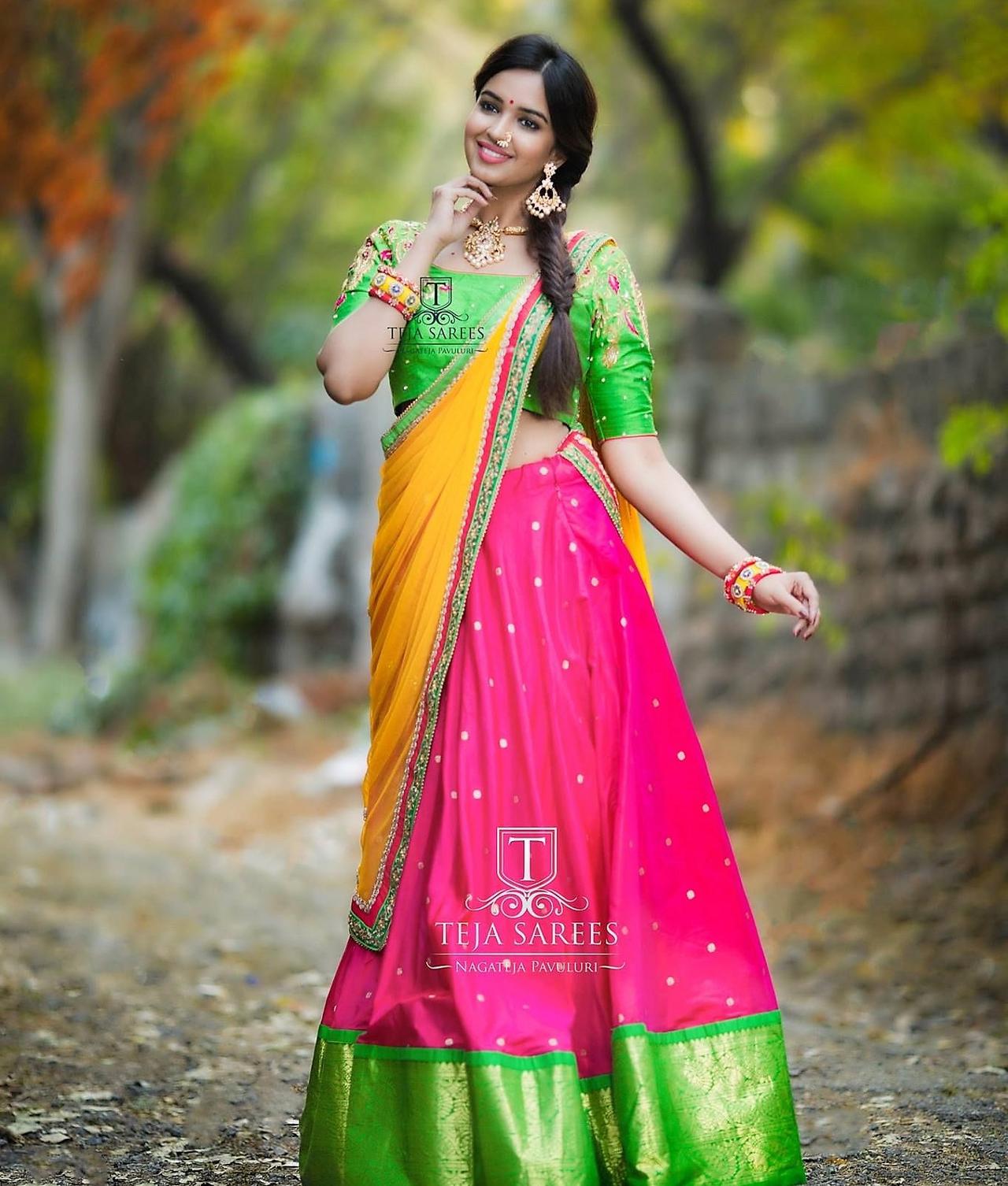
Image Courtesy: Pinterest
With modern silhouettes and innovations, one can certainly find a lehenga half saree that uses the latest choli designs. While that’s certainly one way of personalising your look, we recommend sticking to the classic aesthetic of this garment with the half-sleeved choli and the bright dupatta. As this garment is a bit of a rare sighting, wearing it in all its traditional glory is a great way to pay homage to your culture. If you are wondering about what else your teen can wear to a family wedding, do check out these dresses for 13 year old to wear to a wedding!
Make sure that the hairstyle matches the ethnic look you are going for! Get in touch with a makeup salon near you for the same!

